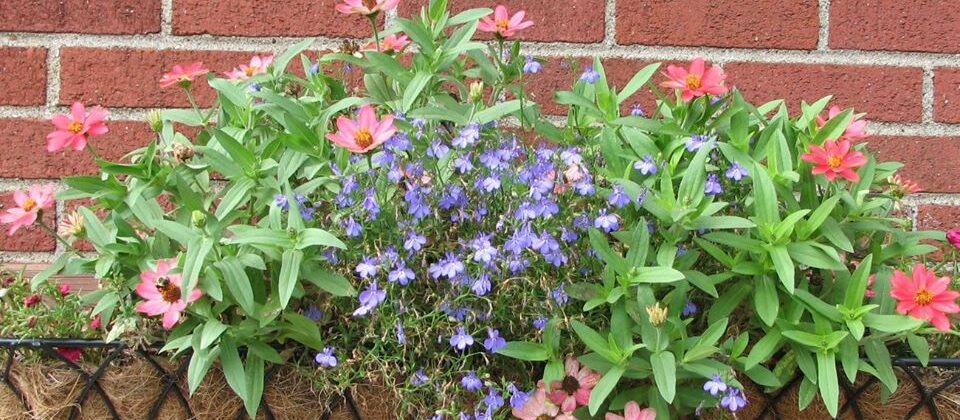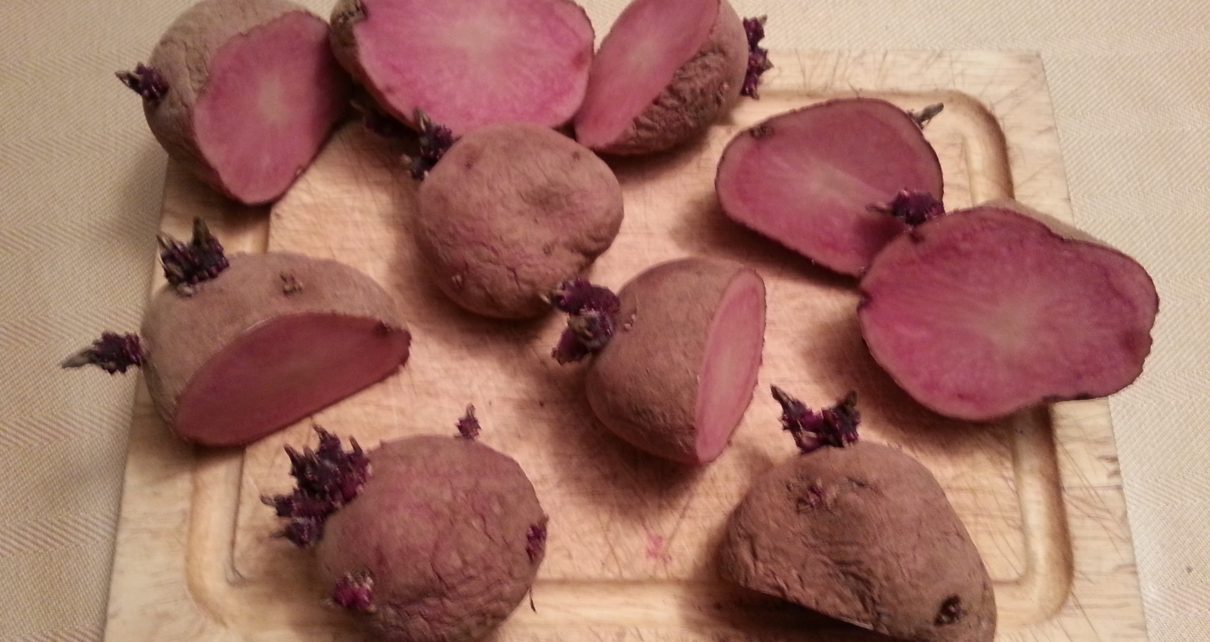Here are my tips for sowing and growing seed potatoes. A seed potato is typically grown organically without sprout inhibitors, will mirror the variety it is supposed to be and should be certified as disease free.
Outdoor Sowing Tips: 1) I usually buy seed potatoes online or from a local nursery. 2) I have tried this step two different ways: Option 1 – Store the seed potatoes in brown lunch bags and space them so they don’t touch each other and put them on a shelf somewhere cool – I use my garage. Option 2 – Put the seed potatoes near a window or grow lights. 3) I check them every few day to see if the eyes are forming any sprouts. Once the sprouts are about 1/2″ tall, slice the seed potatoes in 2″ or 2 oz pieces. If the potato is small, then don’t slice it. The object is to have at least two sprouts on each piece of potato. 4) Place the pieces in a tray out of direct sunlight for a few days to heal the cuts. The process outlined in steps 2) through 4) is called chitting – a little gardening lingo! 5) You can plant seed potatoes as soon as the soil can be worked anywhere between 40 and 60°F. 6) My preference is to use grow bags with organic potting soil. While I made smaller grow bags in the past, I purchased larger ones from Amazon. 7) Roll the fabric down and form a cuff on the grow bag. There should be 4 to 6 inches of soil in the grow bag below where you place/sow the seed potato. 8) Put the seed potato pieces in the bag with the sprout pointing up to the sky. If you are growing larger potatoes you should space the seed potatoes 1 per square foot. If you have a smaller variety or want smaller potatoes, you can space them about 6 inches apart. My grow bags are about 2 square feet so I try to plant between 4 and 5 seed potatoes. 9) Apply about 4 inches of soil on top of the seed potato and water. 10) As for plant food, I use processed or used coffee grounds or bone meal when placed the seed potatoes pieces because plants below the ground enjoy phosphorous!

Growing Tips: 11) When the sprouts are 6 inches above ground, uncuff some of the grow bag and add another 4 to 6 inches of soil. This process is called hilling. If you are growing determinate potatoes, you only have to do this one or two times. If you are growing indeterminate potatoes, you will have to hill more. If you need a refresher on determinate vs indeterminate potatoes, check out my article on the types of potatoes. 12) Consistent moisture is important with tubers which is why I use a drip system. 13) I typically keep a small hoop over the grow bags in the spring to apply fabric for extreme temperature swings and in the summer to apply small spaced netting to keep out the Colorado potato beetles.
I previously shared my tips on how to sow and grow eggplant.



